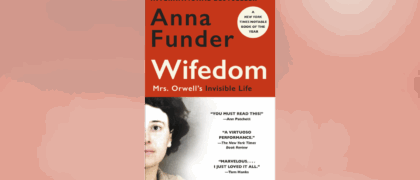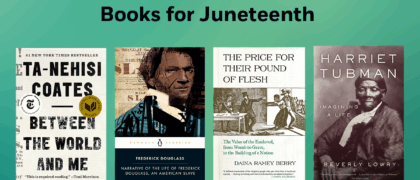By Brian Batugo
Asian American history must be included in the broader context of US history, especially given the increase in hate crimes and incidents resulting from xenophobic and racist rhetoric that falsely blamed the Asian American community for the coronavirus. Catherine Ceniza Choy’s Asian American Histories of the United States offers a significant counter-narrative that celebrates and highlights the historical support and collaboration between Black and Asian Americans, challenging the media’s portrayal of hostility between these racialized groups.
In California, there is a growing demand for resources that present diverse perspectives and center the knowledge and histories of BIPOC communities. By 2030, all California high school students will be required to take an ethnic studies course. In San Diego, where I work as an Ethnic Studies Resource Teacher, this requirement will be implemented by 2024. Central Office Ethnic Studies Resource Teachers and Teachers on Special Assignment (TOSA) across California are needed to support school districts in the strategic implementation ethnic studies courses to fulfill graduation requirements. This is the context in which I position my work in K-12 ethnic studies.
Back in March, I disrupted a regularly scheduled tutorial session in an AVID eleventh-grade class in San Diego to pilot an ethnic studies lesson inspired by a chapter from Choy’s book on the solidarity between Black and Asian Americans. AVID stands for Advancement Via Individual Determination and was founded in San Diego. Classes focus on study skills and generate supportive spaces for first-generation students (all were students of color at the school site I visited) to prepare them for college. Students in the class identified as Black, Somali, Cambodian, Vietnamese, Filipino, and Mexican. All the students were enrolled in their school’s ethnic studies course titled “Identity and Agency in US History,” so they were familiar with ethnic studies content and teaching practices from their history teacher.
Entering Space
To establish my connection with the students, I introduced myself as a queer Filipinx-American educator with roots from Stockton, California, the home to one of the largest Filipino populations outside of Manila from the 1920s-1950s. I shared about my degree in Ethnic Studies from UC Berkeley, my former high school students in Stockton, my fiancé Michael, and my dog Patrick. Building a community and being critically self-aware and transparent about my own intersectional social identities is crucial as an ethnic studies K-12 educator because it models the importance of identity for students. This understanding of self shapes the way we create, teach, and explain. It influences our biases and deepens our ability to relate to students, especially those who have not been centered in textbook narratives of History and English curriculum.
Next, I outlined how today’s lesson could be considered an ethnic studies learning experience by incorporating the guiding principles and values outlined in California’s Model Ethnic Studies curriculum. We aimed to do the following:
- Celebrate and honor communities of color—specifically Black and Asian Americans—by providing a space to share their stories of struggle and resistance, along with their cultural wealth
- Center and place high value on marginalized knowledge, acknowledging how our history classes did not have a chapter readily available to discuss today’s topic
- Challenge oppressive beliefs on ideological, institutional, interpersonal, and internalized levels—especially the ways that viral videos showing Black-on-Asian violence during the pandemic reinforced the beliefs that tension and division run rampant among our communities
Energizing our Learning
To begin the lesson, we discussed solidarity. What is it? What do you know about it? When have you experienced it? How do we show it today? To facilitate collective knowledge building, I showed a video where ants mobilize and create a ball to protect one of their own from an anteater. This visual representation provided context for students to understand solidarity as teamwork, a sense of togetherness, problem-solving, and protection.
We then delved deeper into solidarity by examining visual examples, such as images of workers with linked arms, individuals supporting Ukraine’s flag, Black Lives Matter protesters, and a banner in solidarity with the Trans community. These modern-day examples allowed students to connect with familiar instances of solidarity. However, we then shifted our focus to three specific images: Mildred and Richard Loving, a gif of two people performing a complicated handshake, and a picture of apple pie à la mode. We explored how marriage, friendship, and food can serve as forms of solidarity, encouraging students to consider the different ways they show solidarity in their own lives.
After establishing a conceptual understanding of solidarity among the students, we examined how media headlines portrayed the relationship between Black and Asian Americans. Some of these headlines included: “Black-Asian animosity is an American tradition;” “Model Minority Myth Again used as a Racial Wedge between Asians and Blacks;” “Viral images show people of color as anti-Asian perpetrators. That misses the big picture.”
Students made critical observations about what they saw. One student noticed division among the communities and questioned the assumption that animosity between Black and Asian Americans was an American tradition passed down through generations. Another student criticized these narratives, pointing out how the media often pit communities of color against each other. Others disagreed with the narrative, emphasizing the need for more comprehensive information beyond just headlines. This perspective-taking exercise allowed students to critically reflect on their own identities and consider different viewpoints. I was able to facilitate these conversations about race because the class already had a strong sense of norms and community, thanks to their AVID teacher. Reflecting on how the #StopAsianHate movement contributed to this narrative, we discussed the power of the media in shaping public perception.
Framing Our Inquiry
We then delved into Choy’s quote, which posed a thought-provoking question:
In the age of COVID-19, we bear witness to the intense circulation of videos and images of Blacks committing violence against Asian Americans on social media, creating the notion that the surges in anti-Asian hate crimes and incidents are primarily a problem of Black-on-Asian violence. But what if the history about our communities’ solidarity had been circulated with the same frequency and intensity?
This quote from Choy provided a framework for our inquiry, challenging students to envision a better reality, one that emphasizes solidarity among Black and Asian Americans to serve as a much-needed counter-narrative to the media headlines we just discussed. It grounded the next phase of the lesson, providing a clear challenge and purpose. The lesson’s essential question was: How have Black and Asian American shown solidarity for each other in the past and today?
The subsequent part of the lesson required students to practice solidarity with each other. They collaborated in small groups, each assigned a one-page excerpt from Choy’s chapter paired with a photo to show the individuals honored in each narrative. Choy included twelve case studies demonstrating instances of solidarity between Black and Asian Americans, ranging from Frederick Douglass in the 1860s to China Mac and Mista F.A.B. in 2020. Students worked together to read the article, identify what was surprising, interesting, and troubling, and locate evidence of solidarity in their assigned narrative. They then collaborated to draft a “solidarity claim,” answering the inquiry question and supporting their claim with evidence from Choy’s excerpts.
Each One, Teach One
But we didn’t stop there. The culminating project for this lesson involved students creating posters using their notes in a solidarity graphic organizer to demonstrate their learning. These artifacts summarized the key takeaways of their learning in an authentic and visually compelling way. Students presented their work to the class with enthusiasm and pride. Many commented on how much of these narratives were surprising because the history was new to them. Overall, as each group presented the work, the stories of Black and Asian American solidarity began to circulate. These posters, proudly displayed on the walls of the classroom, serve as reminders to students of the enduring solidarity between Black and Asian Americans throughout history.
Reflecting on how this newfound knowledge might challenge perceptions of Black and Asian American solidarity moving forward, I felt compelled to share some key reflections from students as we wrapped up our lesson:
- Black and Asian solidarity has existed for 150+ years.
- This helps me understand more that even if people think otherwise against us, we can use our voices to speak up and let ourselves be heard that we’re in unity.
- Knowing the history that was once hidden from us challenges the media and stereotypes they try to create within our communities by unveiling the actual truth of the solidarity between the Black and Asian Americans today.
- The history reinforced our belief of our togetherness by showing Black and Asian Americans can come together to make change.
Choy reminds us that, “The history of Black and Asian American solidarity gives us not only a lens to view the past but also a way to reimagine our future.” Her words resonate deeply with the Black, Asian, and Latinx American students that engaged in this learning experience.
As we conclude AAPI Heritage Month, I urge educators to extend their teaching of Asian American history beyond the month of May. Ethnic studies in K-12 education provides a powerful opportunity to weave marginalized histories into the core curricula. It grants permission for educators to go beyond the textbook and seek out stories that reflect the identities and communities of the students in their classrooms. Choy’s work is a must-read for any educator ready to begin, extend and sustain ethnic studies in K-12 education.
Brian Batugo is a queer Filipinx-American educator with over a decade of experience in K-12 education and community leadership. Throughout his career, he has focused on centering ethnic studies in classrooms and supporting the development of ethnic studies pedagogy among educators. Batugo’s expertise lies in ethnic studies curriculum development, community/culturally responsive teaching, transformative leadership, and integrating ethnic studies with dance and theater. Currently, Brian works as an Ethnic Studies Resource Teacher in San Diego, CA, where he is driven by a deep commitment to social justice and the power of education to promote healing and liberation. In this role, he creates and implements curriculum materials that center the experiences of communities of color, engage students in critical inquiry, and build their capacity to be agents of change in their communities.





